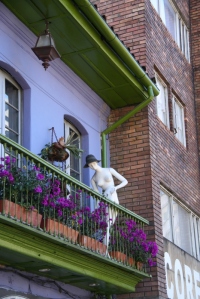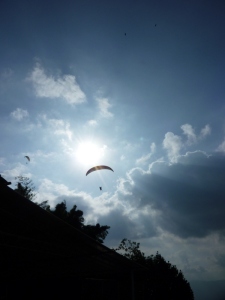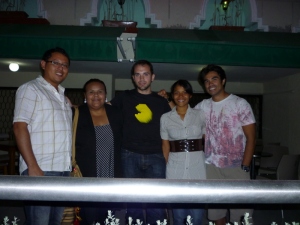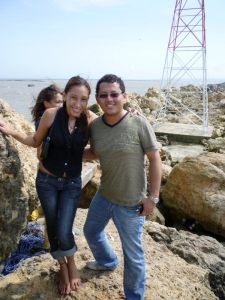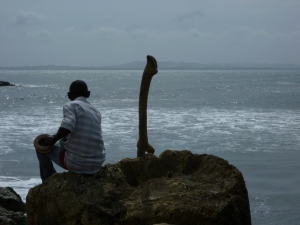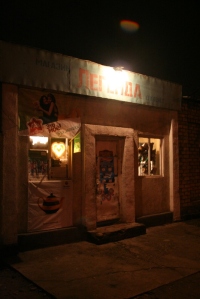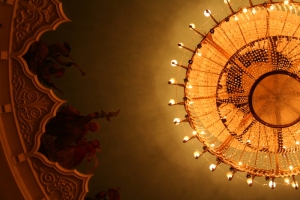Echoes of violence
January 29, 2010 Leave a comment
This is a repost from my blog on Kiva Stories from the Field. Check out the site for blogs from other Kiva Fellows across the world.
By Rob Packer, KF10 Colombia
One of the things that attracts people to the Kiva Fellowship is the chance to visit places they would never visit otherwise. Over the past three weeks with the Fundación Mario Santo Domingo (FMSD), I’ve been to barrios in Bogotá, Barranquilla and Cartagena that I would never have visited otherwise. The alegría and friendliness of Kiva borrowers normally means that this is an overwhelmingly positive experience. However, there are other kinds of visits, often to poorer areas, and it’s this kind of visit that haunts you and enrages your sense of justice in the world. Wednesday of this week was my hardest day in four months as a Kiva Fellow.
Cartagena is Colombia’s most visited city and is known for its colonial architecture, beaches and port. On my first trip to the city though, I sped past all of these to go to the city’s other barrios with loan officers from FMSD. The moment I first realized that my first visit of the afternoon would be different from the others was when Elberto, the loan officer for the area, stopped his motorbike and made sure I knew where my camera was: “Es una zona peligrosa” (“This is a dangerous area”). As he explained later, whenever he is working in the area, he only goes by car, taxi or motorbike as the area can be dangerous for strangers walking around. Incidentally, this is the only time in my three weeks in Colombia that I’ve ever felt even remotely at risk.
When we arrived at the seashore, the streets thinned out and were replaced by wooden buildings and dirt roads that characterize what Colombians refer to as barrios de invasion (squatter settlements). As we got off the motorbike, Elberto mentioned that that Teresa, the woman we were going to see, was una mujer desplazada (a displaced woman). When I asked him later, he told me that a lot of the inhabitants of this 20-year-old barrio had been displaced from the interior of the country or from the southern part of Bolívar, the department where Cartagena lies. Colombia has one of the world’s highest populations of internally displaced people (IDPs or desplazados) with up to 4.3 million people (10% of the population) displaced by guerrilla, paramilitaries or drugs traffickers: a process that continues to this day with 2.4 million people displaced since 2002 (link, document and video in Spanish only).
Teresa is originally from San Rafael, Antioquia and was forced to leave 12 years ago. She told us that when she arrived in Cartagena, she had nothing: they’d had to leave everything behind. Teresa seemed strangely quiet and reserved compared with most Colombians I’ve met and there was something about the way she said this sentence that made me realize that she wasn’t exaggerating: her “nothing” meant literally nothing. Since arriving in Cartagena, she and her family moved from barrio to barrio before coming to Olaya four years ago and where she still lives. As she showed us her grocery shop taking up the front half of her home, she mentioned a foundation (Granitos de Paz) who constructed her house out of breeze blocks (cinder blocks), replacing the wooden structures of the area. Elberto interrupted to say that this foundation constructs basic homes at no cost and that Teresa’s is just one month old. However, he later added that some people living in the area are suspicious of their motives and don’t want their homes reconstructed because they’re afraid they’ll be taken away from them—the fear of authority runs deep.
When Teresa told me how thankful she is for what she has, it suddenly dawned on me that her new house, business, loan and hopes of sending her children to university made her one of the lucky ones. It doesn’t bear thinking about how many other desplazados don’t have these opportunities. As I put my motorcycle helmet on and we headed off, I couldn’t control the tears I’d been choking back since almost the beginning of our interview. I remember feeling overwhelmingly thankful that Teresa is able to get the help she deserves so much.
*
The next day, I went to two towns called San Jacinto and San Juan de Nepomuceno, two hours from Cartagena to visit borrowers there with César, the local loan officer originally from San Jacinto. Like a lot of rural Bolívar department, the towns were affected by Colombia’s most recent period of armed conflict in the late 90s when guerrilleros used to arrive at night. One borrower we visited told us that she planned on leaving and going to Cartagena but no longer feels scared. Another borrower happily showed me her business and told me about her three children all living in other cities of Colombia; it was only hours later that César explained to me that one of her sons was killed 13 years ago by guerrilleros and that she could only work out how long she’s been with FMSD in relation to her son’s death. César, who knew of him, could offer no explanation as to why.

















